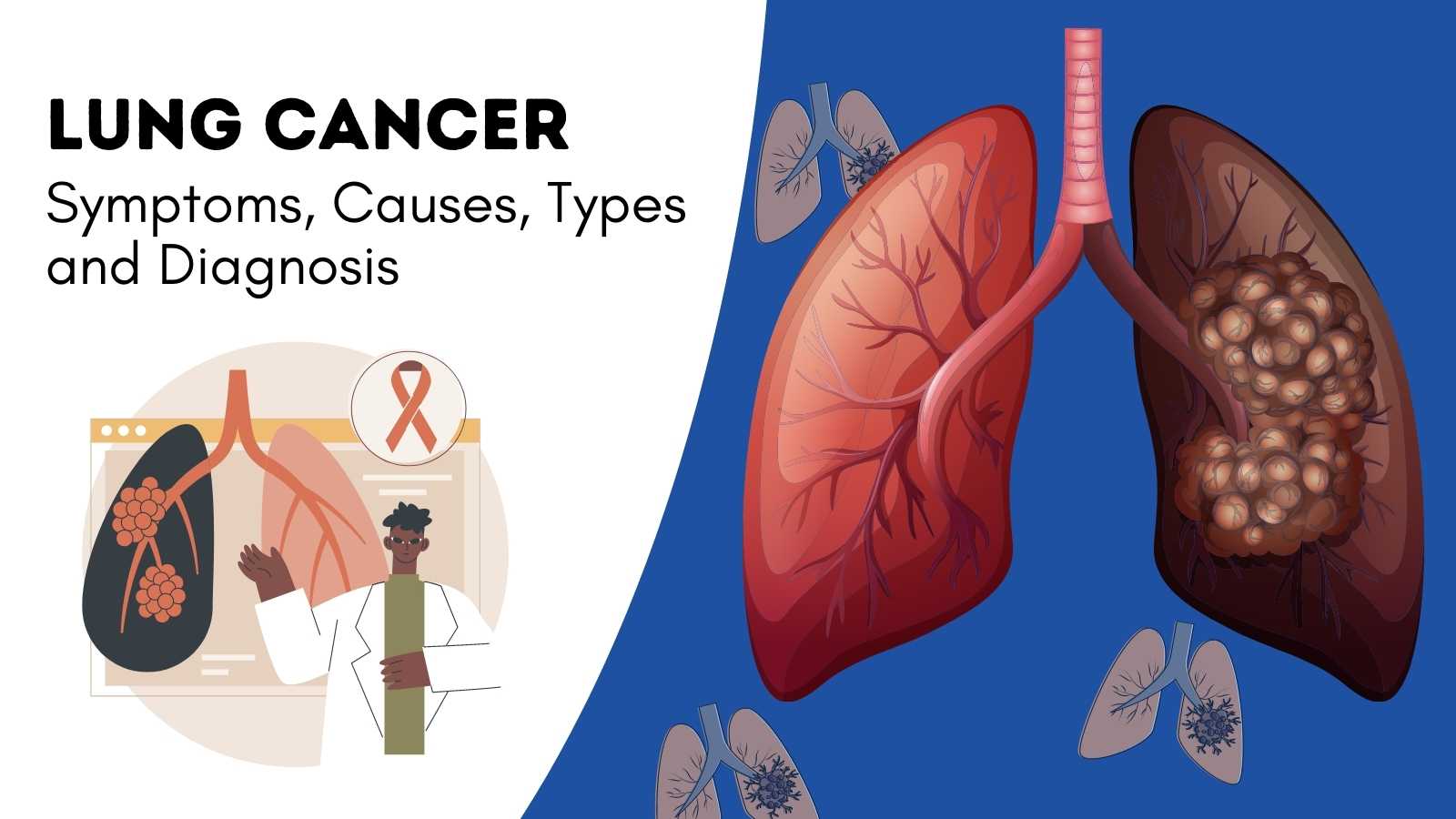lung cancer causes symptoms stages treatment and prevention are essential topics to understand, asPulmonary cancer is a disease that begins when abnormal cells in the lungs grow uncontrollably. These abnormal cells form tumors that interfere with the lungs’ main function—taking in oxygen and releasing carbon dioxide during breathing. The lungs are soft, air-filled organs located in the chest.
This type of cancer is the most common cause of cancer-related deaths globally. While smoking is the leading cause, lung cancer can also occur in non-smokers.
“Symptoms of Lung Cancer”
In its early stages, Pulmonary cancer often doesn’t cause noticeable symptoms. Most people don’t realize they have it until the disease has progressed.
Common Symptoms in the Lungs:
- Persistent cough that doesn’t go away
- Pain in the chest
- Coughing up small amounts of blood
- Hoarseness in the voice
- Difficulty breathing or shortness of breath
- Wheezing or noisy breathing
Symptoms When Cancer Spreads:
- Pain in the bones
- Headaches
- Unexplained weight loss
- Loss of appetite
- Swelling in the face or neck
When to Seek Medical Advice
If you notice persistent or concerning symptoms—especially if you smoke—it’s important to consult a healthcare provider. They can recommend smoking cessation tools or investigate symptoms further.
“Causes of Lung Cancer
Lung cancer develops when cells in the lungs undergo changes in their DNA. Normally, DNA tells cells when to grow and when to die. In cancer, those instructions malfunction, causing the cells to multiply rapidly and live longer than they should. These cells can then form a mass (tumor) and invade nearby tissues or spread to other parts of the body—a process known as metastasis.
Smoking and Its Link to Lung Cancer Causes
Smoking is responsible for the majority of Pulmonary cancer cases. Cigarette smoke contains numerous carcinogens (cancer-causing chemicals) that damage the lung tissue. Over time, repeated exposure to these substances makes it harder for the body to repair the damage, eventually leading to cancer.
However, not all cases are linked to smoking. Pulmonary cancer can still develop in non-smokers and people not exposed to secondhand smoke.
ALSO VISIT
“Stages of Lung Cancer”
Pulmonary cancer is broadly classified into two main categories based on how the cells appear under a microscope:
1. Small Cell Pulmonary Cancer (SCLC)
- Mostly affects heavy smokers
- Less common
- Tends to spread quickly
2. Non-Small Cell Lung Cancer (NSCLC)
- More prevalent
- Includes subtypes such as:
- Adenocarcinoma
- Squamous cell carcinoma
- Large cell carcinoma
Lung Cancer Treatment”
Risk Factors
Several factors can raise the likelihood of developing Pulmonary cancer. Some are lifestyle-related, while others are beyond personal control.
Smoking as a Primary Cause of PulmonaryCancer
- Smoking: The more you smoke and the longer you smoke, the higher your risk.
- Secondhand Smoke Exposure: Inhaling smoke from others can still damage your lungs.
- Radiation Therapy to the Chest: Previous treatments for other cancers may elevate your risk.
- Radon Exposure: This natural gas can accumulate in homes and is a known carcinogen.
- Occupational Hazards: Long-term exposure to substances like asbestos, arsenic, or chromium can increase risk—especially in smokers.
- Family History: A family history of Pulmonary cancer can indicate a genetic predisposition.
Complications from Lung Cancer
Lung cancer can lead to various complications, depending on its location and whether it has spread.
Possible Complications Include:
- Breathing difficulties: Tumors can obstruct airways or cause fluid buildup, making it hard to breathe.
- Coughing up blood: Bleeding within the lungs can cause this symptom. Medical intervention can control severe bleeding.
- Persistent pain: Especially if the cancer spreads to bones or the chest lining.
- Pleural Effusion: Fluid may collect around the lungs (pleural space), reducingPulmonary capacity.
- Metastasis: Cancer can spread to other areas like the brain or bones, causing new symptoms and complicating treatment.
Though advanced Pulmonary cancer is typically not curable, treatment options can improve quality of life and extend survival.
Lung Cancer Prevention
Although there’s no guaranteed way to avoid Pulmonary cancer, you can significantly reduce your risk by making lifestyle changes.
Lung Cancer Prevention: How to Lower Your Risk
- Avoid Smoking: Don’t start, and if you smoke, stop as soon as possible.
- Stay Away from Secondhand Smoke: Avoid enclosed areas where smoking occurs.
- Test for Radon: Use a test kit or hire professionals to check your home for radon gas, particularly in high-risk regions.
- Use Workplace Protections: If your job exposes you to hazardous chemicals, use safety equipment like masks and follow safety protocols.
- Eat Nutritious Foods: Emphasize fruits and vegetables in your diet. Whole foods offer more benefit than supplements, which can sometimes do harm.
- Stay Active: Aim for regular physical activity on most days of the week.
Conclusion
Lung cancer is a serious illness that affects millions worldwide, often with life-threatening consequences. However, early detection, quitting smoking, and reducing exposure to harmful substances can make a significant difference. If you experience symptoms or have risk factors, speak with a healthcare provider promptly for screening and guidance.
